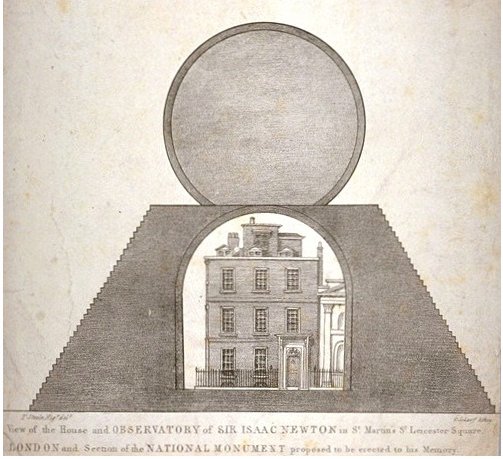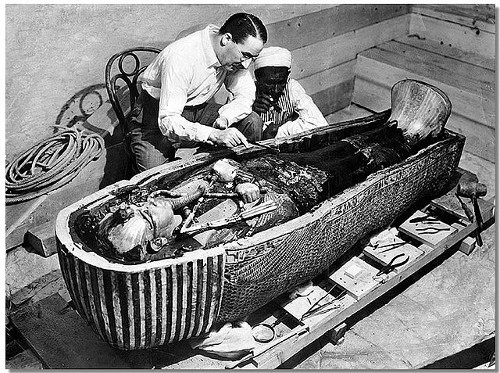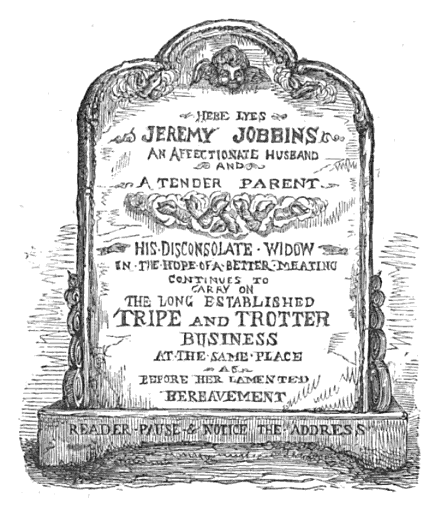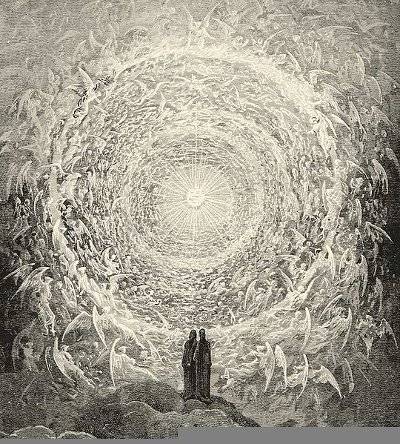
In an anonymous letter to the London Times in 1825, Thomas Steele of Magdalen College, Cambridge, proposed enshrining Isaac Newton’s residence in a stepped stone pyramid surmounted by a vast stone globe. The physicist himself had died more than a century earlier, in 1727, and lay in Westminster Abbey, but Steele felt that preserving his home would produce a monument “not unworthy of the nation and of his memory”:
When travelling through Italy, I was powerfully struck by the unique situation and singular appearance of the Primitive Chapel at Assisi, founded by St. Francis.
As you enter the porch of the great Franciscan church, you view before you this small cottage-like chapel, standing directly under the dome, and perfectly isolated.
Now, Sir, among the many splendid improvements which are making in the capital, would it not be a noble, and perhaps the most appropriate, national monument which could be erected, if an azure hemispherical dome, or what would be better, a portion of a sphere greater than a hemisphere, supported on a massive base, were to be reared, like that of Assisi, over the house and observatory of the writer of the Principia?
The house might be fitted up in such a manner as to contain a council-chamber and library for the Royal Society; and it is perhaps not unworthy of being remarked, that it is not more than about two hundred yards distant from the University Club House.
Protected, by the means which I have described, from the dilapidating influence of rains and winds, the venerable edifice in which Newton studied, or was inspired, — that ‘palace of the soul,’ might stand fast for ages, a British monument more sublime than the Pyramids, though remote antiquity and vastness be combined to create their interest.
Steele wasn’t an architect, and he left the details to others, but he was imagining something enormous: In a subsequent letter to the Mechanics’ Magazine he wrote that “the base of my design [appears] to coincide with the base of St. Paul’s (a sort of crude coincidence of course, in consequence of the angle at the transept), and that the highest point of my designed building should, at the same time, appear to coincide with a point of the great tower of the cathedral, about 200 feet high — the height of the building which I propose to have erected.”
The plan never went forward, but the magazine endorsed the idea: “We need scarcely add, that there is no description of embellishment which might not be with ease introduced into the structure, so as to render it as perpetual a monument to the taste as it would be to the national spirit and gratitude of the British people.”






